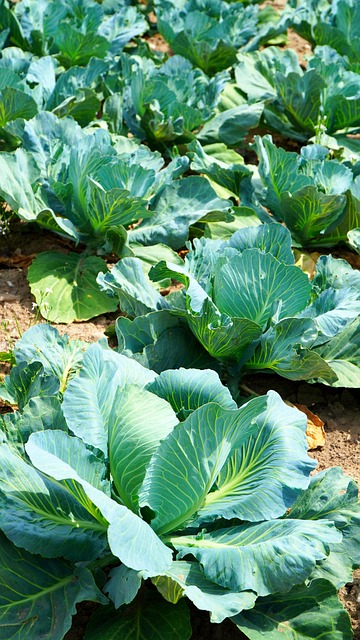Sustainable Strategies for Ensuring Steady Income on Farms
Discover sustainable strategies that income-producing farms employ to generate a consistent revenue stream. From diversifying crops to implementing value-added products and exploring direct sales channels, this article explores proven methods for ensuring long-term financial stability in the agricultural sector. Learn how innovative digital marketing practices can help farmers attract customers and increase their profits. Stay ahead in the constantly evolving marketplace while maintaining a sustainable and profitable farming business.

How can crop diversification contribute to steady farm income?
Diversifying crops is a fundamental strategy for income-producing farms to mitigate risks and maintain steady revenue. By cultivating a variety of crops, farmers can reduce their vulnerability to market fluctuations and environmental factors that may affect a single crop. This approach allows for a more balanced income throughout the year, as different crops have varying harvest times and market demands.
For instance, a farm that traditionally focused solely on corn production might introduce soybeans, wheat, or specialty crops like herbs or vegetables. This diversity not only spreads the risk but also takes advantage of different market opportunities, potentially increasing overall farm profitability.
What role do value-added products play in farm income stability?
Value-added products represent a significant opportunity for farms to increase their income and create a more stable revenue stream. By transforming raw agricultural products into processed goods, farmers can capture a larger share of the consumer dollar and extend their selling season beyond the harvest period.
Examples of value-added products include jams made from farm-grown fruits, artisanal cheeses from dairy farms, or even agritourism experiences that showcase the farm’s operations. These products often command higher prices and can be sold year-round, providing a consistent income source even when fresh produce is out of season.
How can direct sales channels boost farm revenue?
Implementing direct sales channels is a powerful strategy for income-producing farms to increase their profit margins and build customer loyalty. By selling directly to consumers, farmers can bypass intermediaries and retain a larger portion of the retail price for their products.
Popular direct sales methods include farmers’ markets, community-supported agriculture (CSA) programs, and on-farm stores. These channels not only provide better financial returns but also allow farmers to build personal relationships with their customers, fostering brand loyalty and repeat business.
What digital marketing techniques can farms use to attract customers?
In the digital age, farms can leverage online marketing strategies to reach a wider audience and drive sales. A strong online presence can significantly contribute to steady revenue by attracting both local and distant customers. Farms can utilize social media platforms to showcase their products, share behind-the-scenes content, and engage with their audience.
Creating a user-friendly website with an e-commerce function allows farms to sell products directly to consumers beyond their immediate geographical area. Email marketing campaigns can keep customers informed about seasonal offerings, special promotions, and farm events, encouraging repeat purchases and fostering customer loyalty.
How does sustainable farming contribute to long-term financial stability?
Sustainable farming practices not only benefit the environment but also contribute to the long-term financial stability of income-producing farms. By implementing techniques such as crop rotation, integrated pest management, and soil conservation, farmers can reduce input costs and maintain soil health, which is crucial for consistent crop yields over time.
In the United States, many consumers are increasingly interested in sustainably produced food. Farms that adopt and market their sustainable practices can tap into this growing market segment, potentially commanding premium prices for their products and establishing a loyal customer base that values environmentally friendly farming methods.
What government programs support steady farm income in the USA?
The United States Department of Agriculture (USDA) offers various programs to help farms maintain steady revenue and manage risks. These programs play a crucial role in supporting income-producing farms, especially during challenging times.
| Program | Purpose | Key Benefits |
|---|---|---|
| Agriculture Risk Coverage (ARC) | Protects against revenue losses | Provides payments when crop revenues fall below benchmark levels |
| Price Loss Coverage (PLC) | Protects against price drops | Offers payments when commodity prices fall below reference prices |
| Crop Insurance | Mitigates crop loss risks | Covers yield or revenue losses due to natural causes |
| Farm Storage Facility Loan Program | Supports on-farm storage | Provides low-interest financing for building or upgrading storage facilities |
Prices, rates, or cost estimates mentioned in this article are based on the latest available information but may change over time. Independent research is advised before making financial decisions.
In conclusion, ensuring steady income on farms requires a multifaceted approach. By diversifying crops, creating value-added products, leveraging direct sales channels, and embracing sustainable practices, farms can build resilience against market fluctuations and environmental challenges. Additionally, utilizing digital marketing techniques and taking advantage of government support programs can further stabilize farm income. These strategies, when implemented thoughtfully and tailored to each farm’s unique circumstances, can pave the way for long-term financial stability in the agricultural sector.




